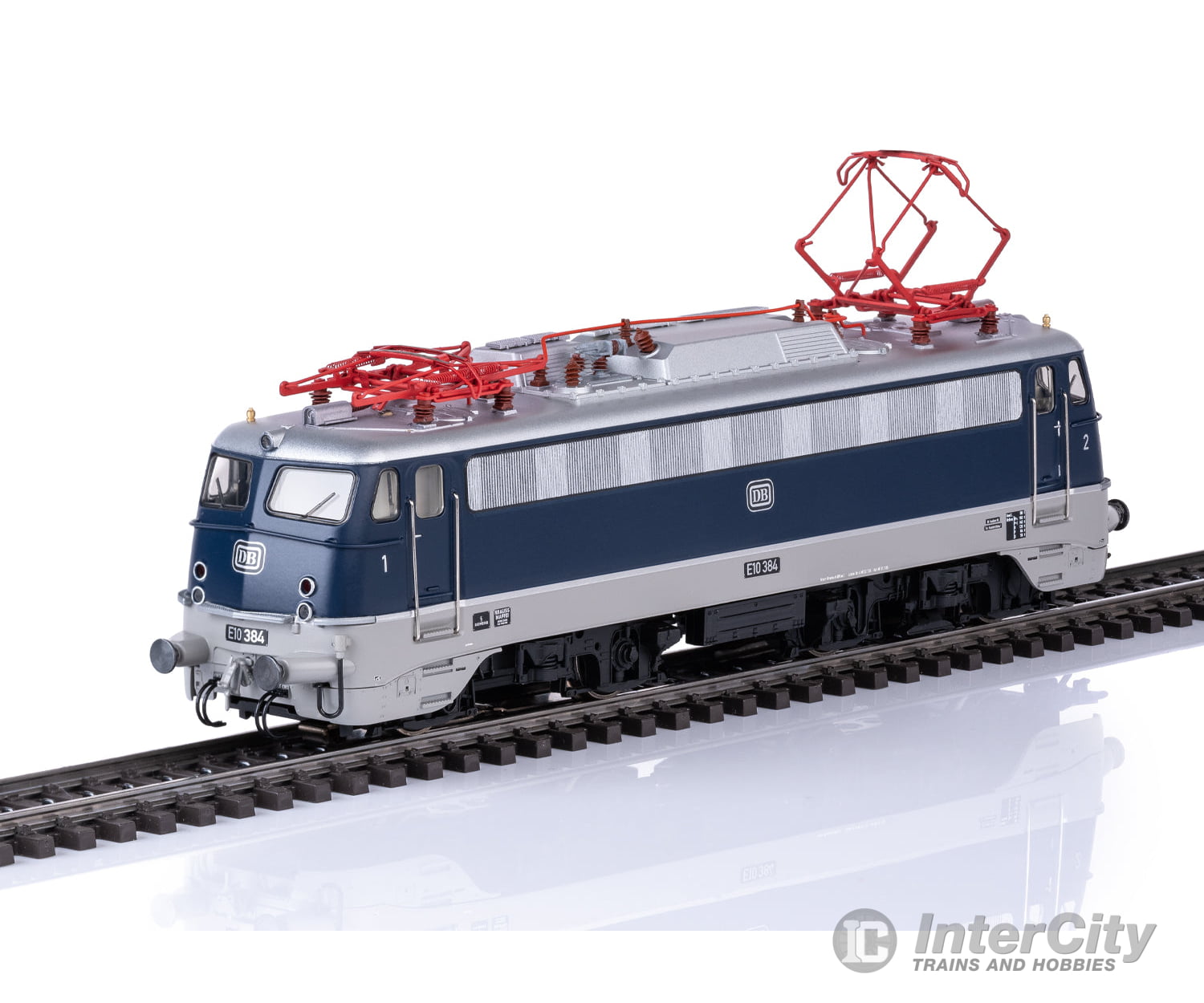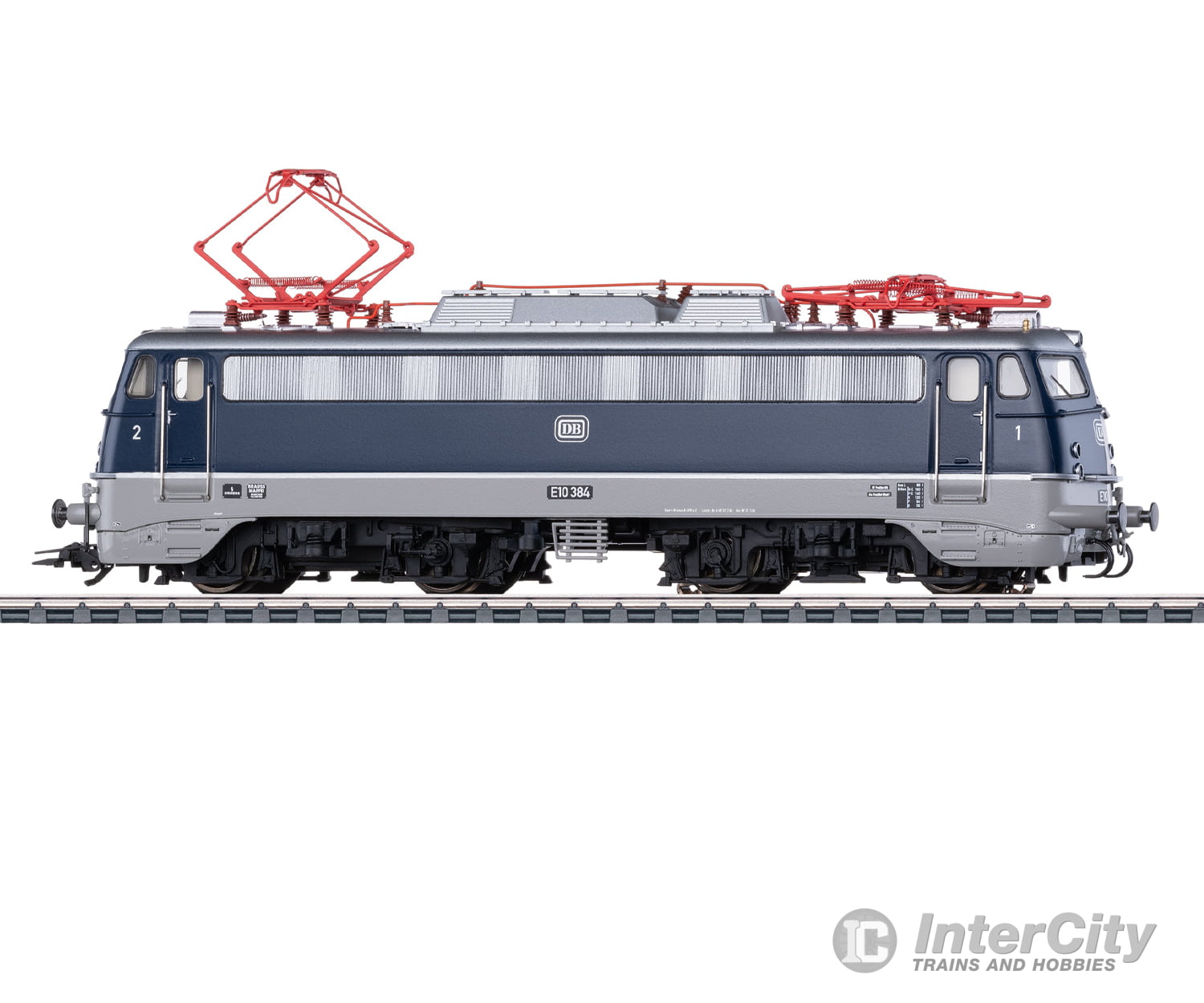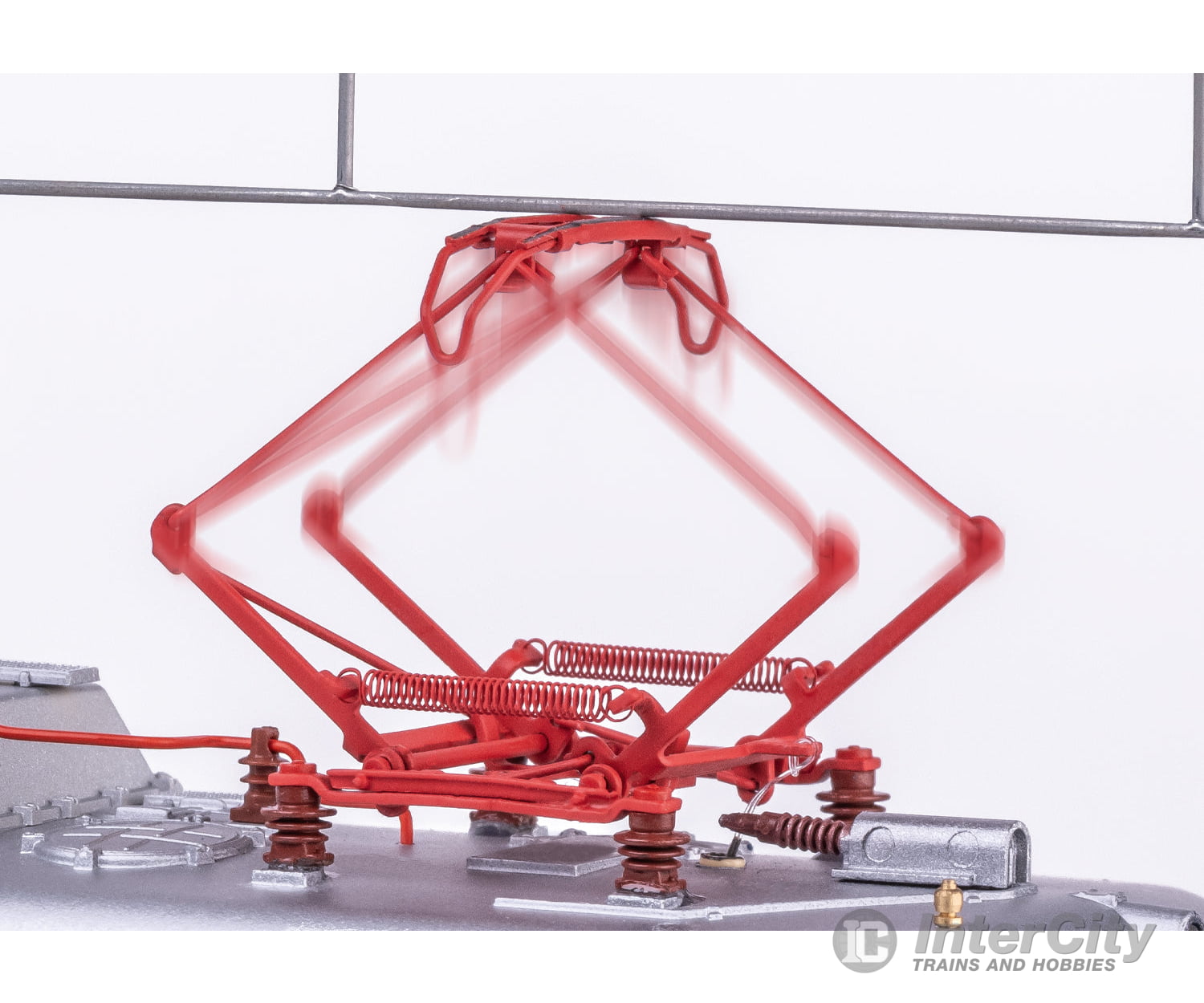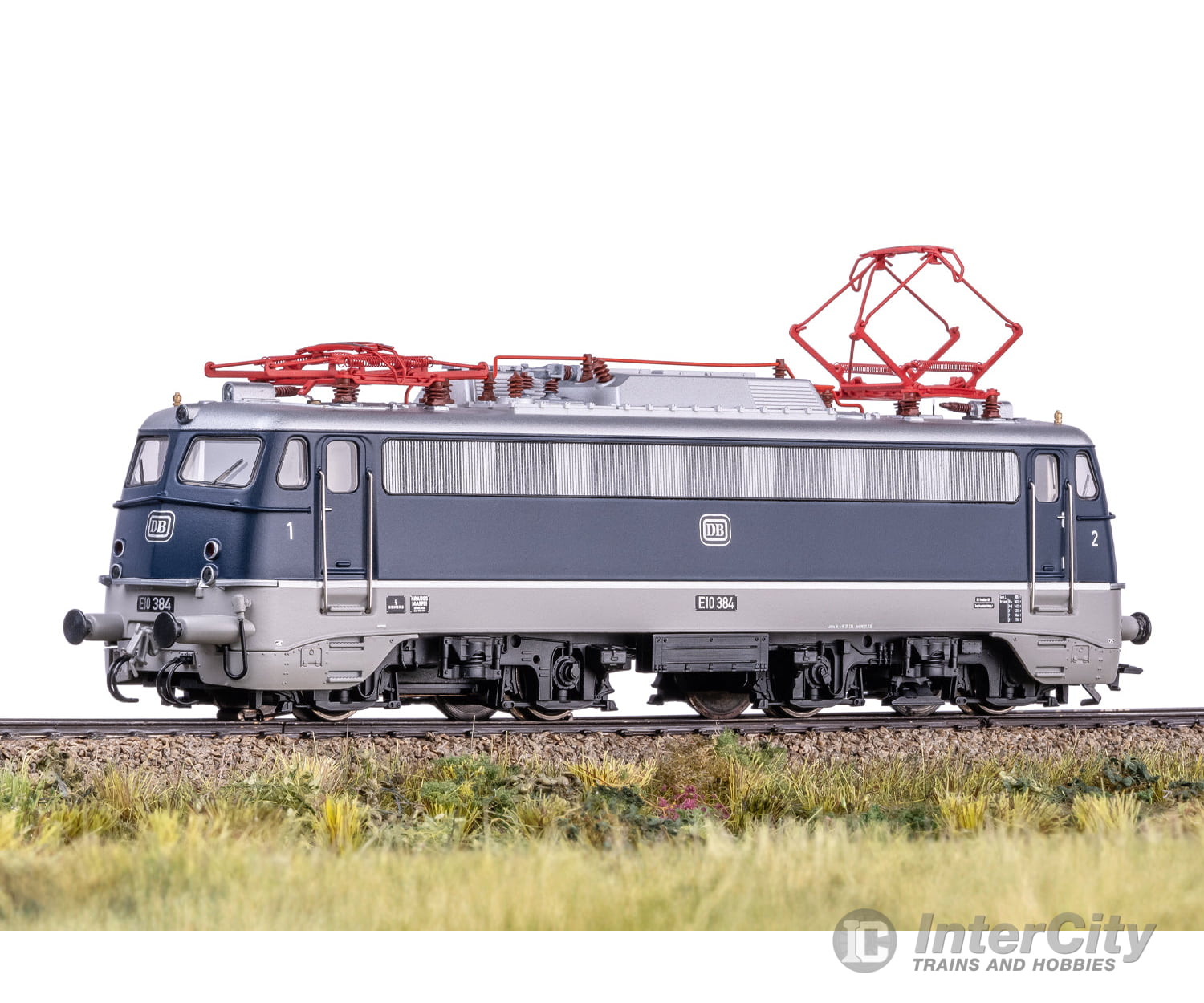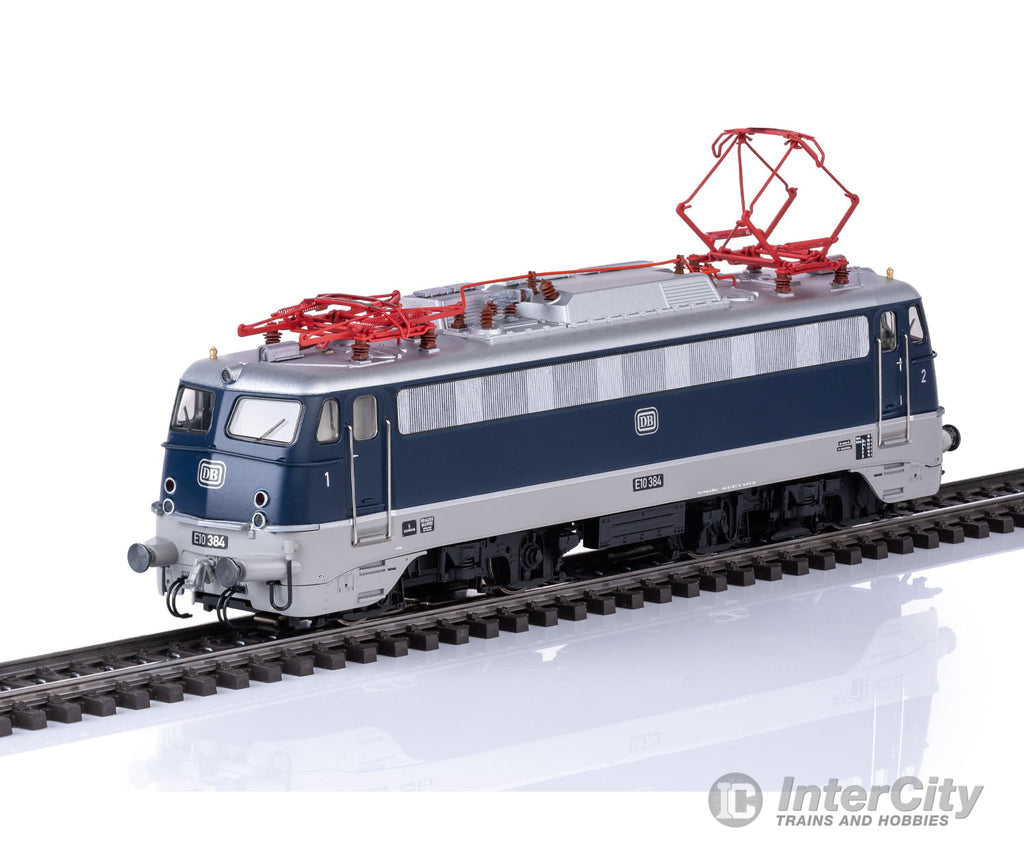Description
The "Pants Crease" or quite prosaically the E10.3: There is hardly a German locomotive type that left its mark on the heyday of the German Federal Railroad starting in the Sixties like the elegant and streamlined units of the class E10.3. Its impressive success story began in the Fifties when the new German Federal Railroad promoted electrification and ordered a powerful and swift electric locomotive type in large numbers in the form of the E10. The first production runs (E10.0 and E10.1) still had a common, squared off locomotive body. In 1962 the first units appeared with aerodynamic ends. The striking design with the "Crease" in the middle soon gave this variation designated as the E10.3 the name "Bügelfalte" or "Pants Crease". For decades, the E10 was the work horse in high quality passenger service on the DB, and the "Crease" was certainly one of the stars on the German rails. Starting in 1990 the E10 wandered over to regional service and performed its services there reliably. The last "Pants Creases" did not wander into retirement until 2013 with many millions of kilometers under its belt.
Prototype: German Federal Railroad (DB) class E10.3 electric locomotive. Locomotive body includes aerodynamic ends, the so-called Pants Crease with continuous ventilation band, continuous rain gutter, and grab irons on the ends. Buffer cladding and skirting included. Steel blue locomotive body with stone gray frame. Road number E10 384. The locomotive looks as it did around 1967.
Highlights
- Detailed type DBS 54 pantographs, without a visible mounting.
- Pantographs can be raised and lowered digitally.
- Cab lighting can be controlled digitally.
- Close couplers with guide mechanisms.
- World of Operation mfx+ digital decoder with extensive light and sound functions.
- Buffer capacitor included to bridge over short areas without current.
- Buffer height conforms to the NEM.
Model: The locomotive has an mfx+ digital decoder and extensive light and sound functions. It also has controlled, high-efficiency propulsion with a flywheel, centrally mounted. All four axles powered using cardan shafts. Traction tires. Triple headlights and dual red marker lights change over with the direction of travel, will work in conventional operation, and can be controlled digitally. The headlights / marker lights at Locomotive Ends 2 and 1 can be turned off separately in digital operation. There is a double "A" light function. Cab lighting can be controlled digitally. Maintenance-free, warm white and red LEDs are used for the lighting. A buffer capacitor is included. The roof equipment is detailed with DBS 54 pantographs. The pantographs can be raised and lowered digitally. The buffer height conforms to the NEM. The close couplers have guide mechanisms. Brake lines, heating lines, and prototype couplers are included separately for installation on the locomotive. Length over the buffers 18.9 cm / 7-7/16".
| ControlUnit | MobileStation | MobileStation 2 | CentralStation 1/2 | CentralStation 3/2* Mobile Station 2** | |
|---|---|---|---|---|---|
| Headlight(s) | * | * | * | * | * |
| Pantograph control | * | * | * | * | * |
| Electric locomotive op. sounds | * | * | * | * | * |
| Horn | * | * | * | * | * |
| Pantograph control | * | * | * | * | * |
| Direct control | * | * | * | * | |
| Sound of squealing brakes off | * | * | * | * | |
| Engineer's cab lighting | * | * | * | * | |
| Headlights locomotive end 2 off | * | * | * | * | |
| Engineer's cab lighting | * | * | * | ||
| Headlights locomotive end 1 off | * | * | * | ||
| Whistle for switching maneuver | * | * | * | ||
| Blower motors | * | * | * | ||
| Compressor | * | * | * | ||
| Letting off Air | * | * | * | ||
| Conductor's Whistle | * | * | * | ||
| Sanding | * | ||||
| Main Relay | * | ||||
| Opening cab door | * | ||||
| Sound of Couplers Engaging | * | ||||
| Sound of uncoupling | * | ||||
| Operating Sounds 1 | * | ||||
| Operating Sounds 2 | * | ||||
| Operating Sounds 3 | * | ||||
| Windshield wiper sounds | * | ||||
| Opening side cab window | * | ||||
| Operating sounds | * | ||||
| Switching range + switching light | * |
